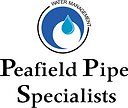Pressure vessels are an integral part of countless industrial processes, from chemical plants to oil refineries. These vessels, which can hold gases or liquids under high pressure, play a pivotal role in ensuring the smooth operation of various industries. However, with great pressure comes great responsibility. Ensuring the safety and integrity of pressure vessels is paramount, and one of the most effective methods for achieving this is hydrostatic pressure testing. In this article, we will dive deep into the world of hydrostatic pressure testing, exploring its importance, the testing process, and its critical role in safeguarding lives and assets.
Understanding the Significance of Pressure Vessels
Pressure vessels are essentially containers designed to store or transport pressurized substances safely. They are found in various industries, such as chemical manufacturing, power generation, and oil and gas extraction. These vessels can range from small tanks to massive industrial behemoths, and they are used to hold a variety of substances, including steam, gas, and volatile chemicals.
The pressure within these vessels can vary significantly, and it is this pressure that allows them to perform their intended functions. However, it also presents a considerable risk if not managed properly. A failure in a pressure vessel can result in catastrophic consequences, including explosions, fires, and chemical leaks, all of which can lead to loss of life, environmental damage, and financial losses.
Hydrostatic Pressure Testing: The Key to Safety
To prevent such disastrous scenarios, hydrostatic pressure testing is employed to assess the integrity of pressure vessels. This testing method involves filling the vessel with a liquid, typically water, and pressurizing it to a level that exceeds its maximum operating pressure. By doing so, engineers and inspectors can determine whether the vessel can withstand the stresses it may encounter during normal operation.
The Testing Process
Preparation: The hydrostatic pressure testing process begins with thorough preparation. The pressure vessel is cleaned and inspected for any signs of corrosion, damage, or weaknesses. All connections and valves are checked to ensure they are in good working order.
Filling with Water: Once the vessel is deemed fit for testing, it is filled with water. The water is typically deionized or demineralized to prevent corrosion and scale buildup. The vessel is slowly filled to avoid any sudden pressure surges.
Pressurization: After the vessel is filled with water, it is pressurized gradually. The pressure is increased incrementally, and the vessel is closely monitored for any signs of stress, deformation, or leakage.
Hold Period: Once the pressure reaches the desired level, the vessel is held at that pressure for a specified period, usually around 30 minutes to an hour. This allows inspectors to observe how the vessel behaves under sustained pressure.
Inspection: Throughout the testing process, inspectors use various methods, including visual inspection, ultrasonic testing, and magnetic particle testing, to detect any flaws or defects in the vessel’s structure. If any issues are identified, the vessel is deemed unfit for service until repairs are made.
Depressurization: After a successful test, the pressure is gradually released, and the water is drained from the vessel. It is then thoroughly dried to prevent corrosion.
The Importance of Hydrostatic Pressure Testing
Hydrostatic pressure testing serves several critical purposes in ensuring the safety of pressure vessels:
Detecting Weaknesses: The testing process helps identify any weaknesses or defects in the vessel’s structure, such as cracks, corrosion, or manufacturing flaws. Identifying these issues early allows for repairs or replacements before they lead to catastrophic failures.
Confirming Design Specifications: Pressure vessels are designed to withstand specific pressures and temperatures. Hydrostatic testing verifies that the vessel meets these design specifications and can safely handle the intended operating conditions.
Compliance with Regulations: Many industries are subject to strict regulations and codes that require periodic pressure vessel inspections and testing. Compliance with these regulations is essential to avoid legal and financial consequences.
Safety Assurance: Ultimately, hydrostatic pressure testing provides peace of mind. Knowing that a pressure vessel has undergone rigorous testing and inspection instills confidence in its safety, protecting both personnel and the environment.
Challenges and Considerations
While hydrostatic pressure testing is a powerful tool for ensuring pressure vessel safety, it is not without challenges and considerations:
Cost and Downtime: Testing can be expensive and may require taking the vessel out of service temporarily, which can impact production schedules.
Environmental Concerns: Disposing of the water used in testing can be an environmental concern. Proper disposal methods must be followed to prevent contamination.
Material Compatibility: Not all materials are suitable for hydrostatic testing. Some materials may degrade or become brittle when exposed to water, leading to potential issues.
Risk of Over-Pressurization: Care must be taken to avoid over-pressurization during testing, as this can lead to vessel failure.
Conclusion
Hydrostatic pressure testing is an indispensable tool for ensuring the safety and reliability of pressure vessels in various industries. By subjecting these vessels to extreme conditions in a controlled environment, we can uncover weaknesses and defects before they lead to catastrophic failures. In doing so, we protect lives, the environment, and valuable assets, making hydrostatic pressure testing a critical component of industrial safety protocols. So, the next time you encounter a pressure vessel, remember that its integrity may have been tested and certified under the watchful eye of hydrostatic testing, ensuring safety beyond measure.
